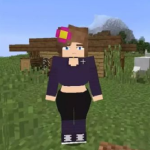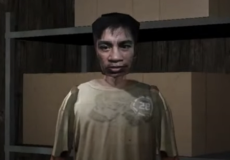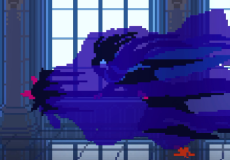

Half Sword
Advertisement
Half Sword is a medieval combat simulator built around full physics interaction and precise control. The player participates in one-on-one duels that rely on real-time motion and physical contact rather than scripted animation. Each movement of the sword, body, or armor responds according to simulated force and momentum. Combat is slow, deliberate, and shaped by reaction speed and spatial awareness. The system models how balance, distance, and timing determine the result of each exchange, turning every encounter into a test of control and patience.
Advertisement
Similiar games
Half Sword is a medieval combat simulator built around full physics interaction and precise control. The player participates in one-on-one duels that rely on real-time motion and physical contact rather than scripted animation. Each movement of the sword, body, or armor responds according to simulated force and momentum. Combat is slow, deliberate, and shaped by reaction speed and spatial awareness. The system models how balance, distance, and timing determine the result of each exchange, turning every encounter into a test of control and patience.
Core Systems and Mechanics
Half Sword uses procedural motion instead of preset attack sequences. The sword follows the player’s input directly, meaning that swing direction and angle affect both reach and power. Opponents follow the same physical logic, so combat becomes a constant exchange of movement and counteraction. The player can grip, push, or adjust posture in response to weapon impact. The environment also contributes to interaction—terrain, obstacles, and collision zones alter each exchange. Stamina management limits continuous attack, encouraging calculated rhythm rather than constant aggression.
The key mechanical layers include:
· Realistic weapon trajectory and force simulation
· Independent body and limb movement tracking
· Armor and material response to pressure and impact
· Environmental interaction and positional constraints
· Stamina and control recovery during combat pauses
Together these systems create a cycle of tension, observation, and precision, where learning how weight and motion interact is essential for survival.
Strategy and Learning Curve
Half Sword rewards understanding of timing more than aggression. New players often overcommit attacks, leaving themselves open to counters. Progress comes from reading motion patterns and predicting responses rather than memorizing sequences. Small corrections in body alignment or grip strength can shift an entire duel. Since every opponent uses the same physical rules, encounters become dynamic and unpredictable. Success depends on rhythm and reaction, not statistics or upgrades. Over time, players refine their style through experience, adapting to each situation instead of repeating fixed tactics.
Development and Community Focus
Half Sword continues to evolve through public testing and community collaboration. Developers frequently adjust weapon handling, motion feedback, and input precision to improve realism. The community contributes through technical discussions, combat breakdowns, and shared clips that analyze technique. Historical martial arts enthusiasts engage with the game for its approach to physical accuracy, while new players treat it as an experimental simulation. Updates expand available weapons and armor sets while refining the motion capture system.
Discuss Half Sword




















